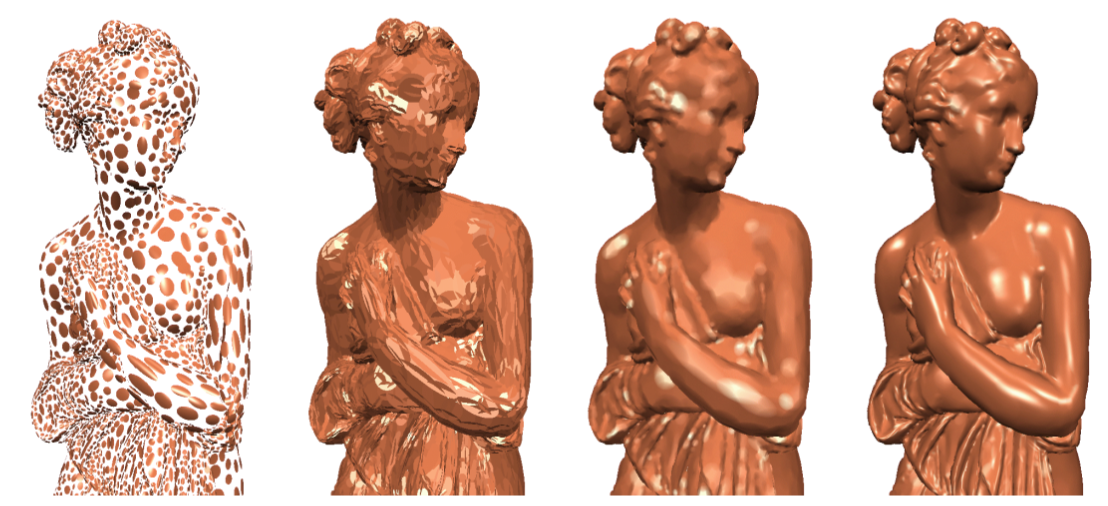Point-Based Graphics
Point-based geometry representations allow to process and visualize 3D models without the need for costly surface reconstruction or triangulation (Kobbelt & Botsch, 2004). They are therefore a flexible and efficient alternative to traditional spline-based or mesh-based surface representations.
A crucial component for any interactive application using point-based representation is the visualization. Due to the lack of hardware support for point primitives, early point-based rendering techniques were pure software implementations (Botsch et al., 2002), and hence were too slow for real-time visualization of highly complex data sets. However, the increasing programmability of current graphics hardware (GPU) allows for hardware-accelerated point rendering (Botsch & Kobbelt, 2003), using so-called surface splatting, where each point sample is equipped with a normal vector and a radius, and therefore represents a small circle or ellipse in object space.

High visual quality is and flexible rendering is achieved using multi-pass deferred shading achieved by the inherent anti-aliasing of surface splatting, as well as by per-pixel Phong shading and shadow mapping (Botsch et al., 2004; Botsch et al., 2005). A systematic description of several rendering approaches is given in the book (Botsch & Kobbelt, 2007).

The point-based rendering metaphor, where elliptical splats are generated from simple OpenGL points, has also been successfully applied in scientific visualization. For instance, in molecular visualization, individual atoms and their connections can be represented by sphere and cylinders, respectively, which are generated and rasterized completely on the GPU (Sigg et al., 2006). Thanks to the high rendering performance, even dynamic (pre-computed) MD simulations of large membrane patches can be visualized in realtime, which we exploited for an interactive “atom-level magnifier tool” in a combined mesoscopic and molecular visualization (missing reference)

Related Publications
- GPU SplattingIn Point Based Graphics, Markus Gross, Hanspeter Pfister (editors), Elsevier / Morgan Kaufmann, 2007






